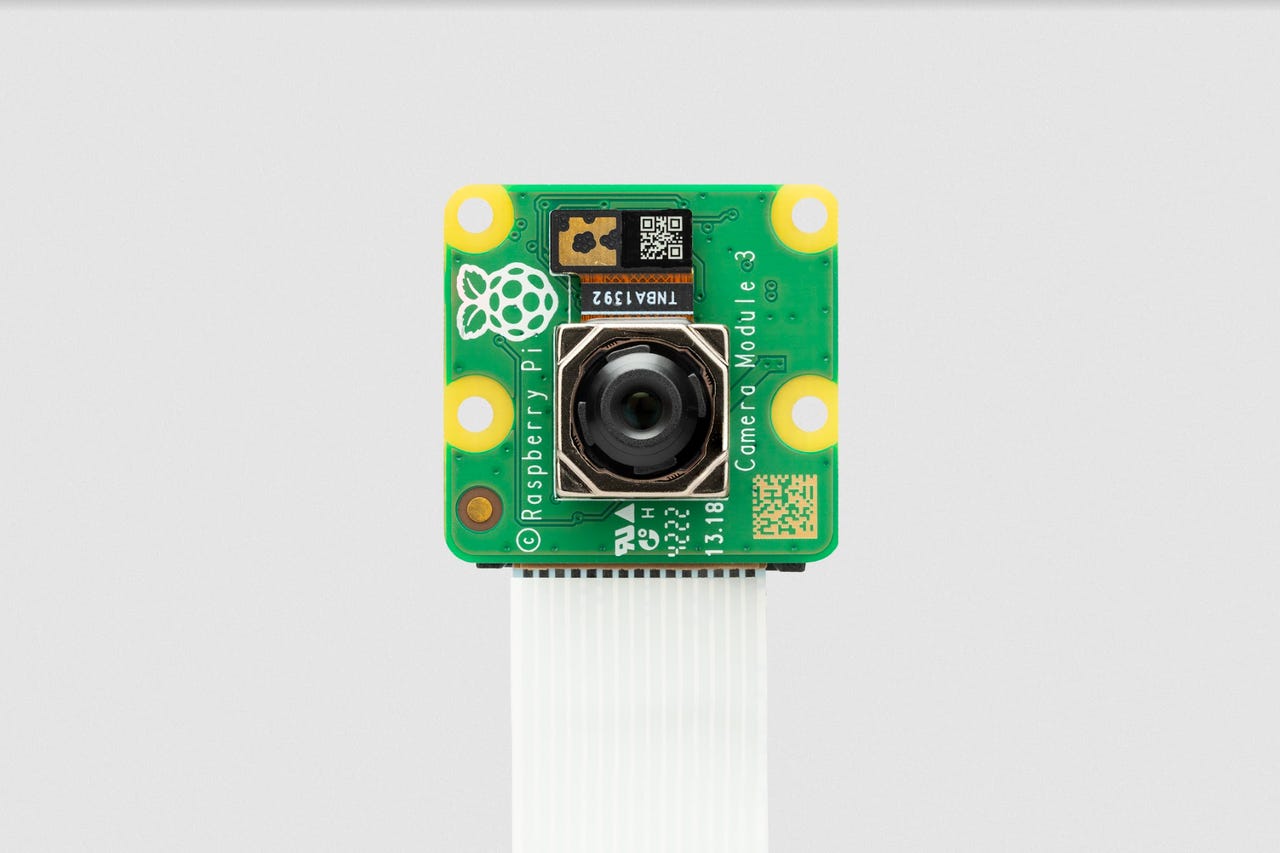Raspberry Pi's Camera Module 3 arrives with these big updates


Raspberry Pi has announced the third version of its Raspberry Pi Camera Module, which comes in four variants that start at $25 and features HDR imaging and autofocus for the first time.
It's also launching a mounted version of the Pi High Quality Camera.
Raspberry Pi Camera Module 3 succeeds the 2016 Camera Module 2, but now comes with a 11.9 megapixel (MP) Sony sensor rather than the former model's 8.1 MP Sony sensor. The Camera Module 3 also comes in four variants: the standard Field of View (FoV); wide FoV; NoIR (infrared sensitive), and NoIR Wide FoV.
The standard FoV variants maintain the $25 entry level price but offers a wider 66° horizontal FoV versus to the Module 2's 62° horizontal FoV. The two wide-FOV options cost $35 and offer a 102° (horizontal) FoV. Raspberry Pi chief Eben Upton notes the wide-FoV variants have a slightly lower angular resolution than the Module 2, but users gain new applications like digital panning.
But the two big new features of the Camera Module 3 are powered autofocus — rather than the fixed focus of its predecessors — and high dynamic range (HDR) imaging that most of us are used to in smartphone cameras.
Thanks to autofocus, the Module 3 can take crisp images of objects from around 5mm away — a big improvement from "average" images the Module 1 and 2 could take from a meter away with their fixed focus lenses, according to Upton.
HDR is enabled by the Camera Module 3's Sony back-illuminated IMX708 sensor, allowing it to capture light and shadows more like the human eye.
Upton says HDR is the "most exciting feature" of the Module 3 and goes into detail about why it's important for the new Pi camera accessory. As with many smartphones, the Module 3 takes multiple images in varying exposures -- normal, under, and over -- to create a superior image.
"For a scene with both bright and dark regions (one with high dynamic range), there isn't necessarily a single good choice of exposure time: you're faced with an invidious choice between blowing out the bright regions or underexposing the dark ones. High-dynamic-range (HDR) sensors like IMX708 tackle this problem by taking multiple simultaneous exposures with different exposure times. We can then select the exposure which best captures the detail in each region of the image, and apply a tone mapping process to compress the dynamic range of the result for display or storage," explains Upton.
The autofocus functionality relies on the IMX708's Phase Detection Autofocus (PDAF) capabilities but uses Raspberry Pi's Contrast Detection Autofocus (CDAF) algorithm if a high-confidence PDAF result is not available, according to Upton.
Raspberry Pi has also launched a new variant of the 2020 $50 High Quality Camera, which featured interchangeable telephoto and wide-angle lenses for C- and CS-mount standards. Raspberry Pi's new variant has a native M12 mount, cutting out the need for adapters that some customers were using to connect fisheye lenses. It also costs $50.
Only the Raspberry Pi 400 and the 2016 launch version of Zero are incompatible with the Camera Module 3 because they lack CSI connectors. It also shares the Module 2's board dimensions and mounting-hole positions. But it is not mechanically compatible with the camera lid for the Raspberry Pi Zero Case.
On the software side, the Module 3 is only supported by the libcamera software and the libcamera-based Picamera2 beta under Raspberry Pi OS Bullseye.